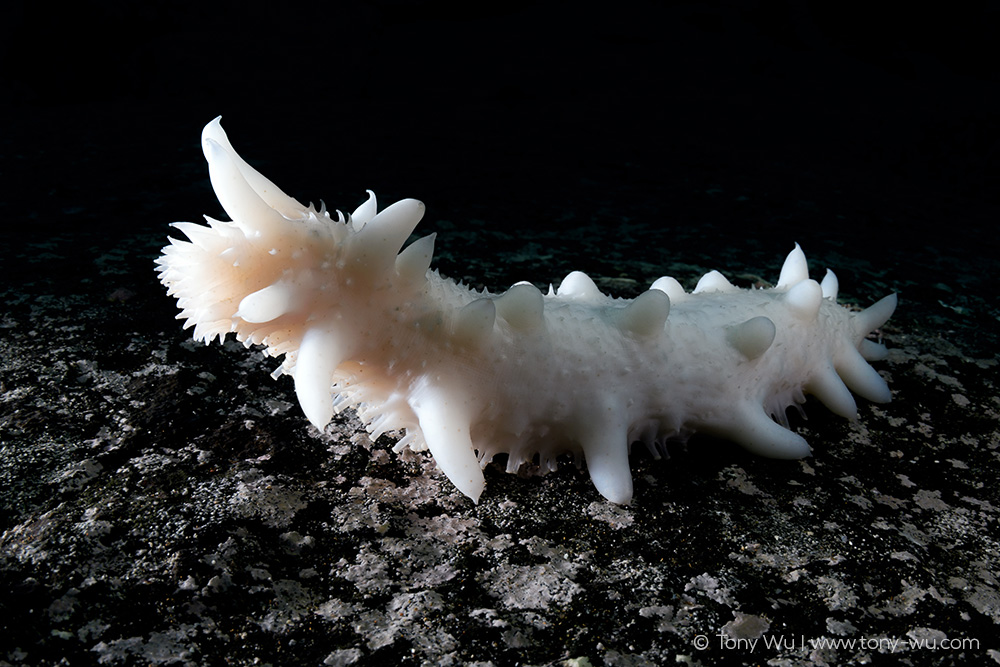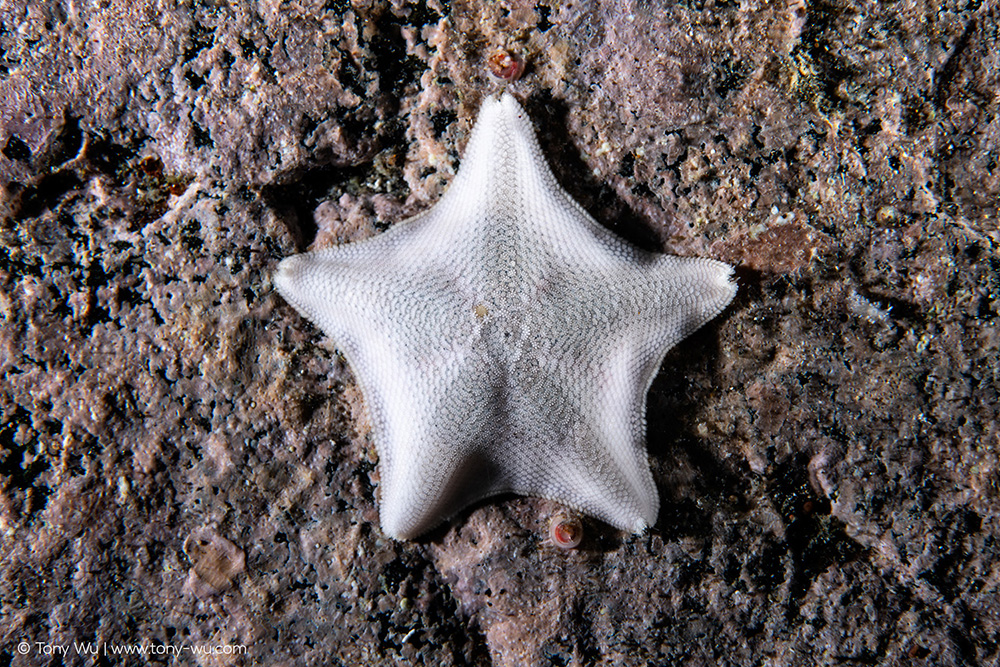Search online for albino animals. You'll see mammals, some reptiles, a smattering of birds, maybe some insects.
What you're less likely to come across are images of albino marine invertebrates.
They exist. And they're beautiful.
To date, I've come across two examples.
The first is this endangered Japanese spiky sea cucumber (Apostichopus japonicus) (IUCN Red List):

I am not sure why this species is endangered, but I suspect it could have something to do with the fact that they're eaten in Asia.
A research paper (1) published in 2018 documented a price of US$3583/ kg in Hong Kong for dried sea cucumbers of this species (see photo).
Albino sea cucumbers are reportedly rare, with figures of 1 in 10,000 to 1 in 200,000 bandied about. I don't know how accurate such ratios are, but they are certainly rare enough for someone in China to reportedly have paid over US$23,000 for five of them (2).
The second example is this blue bat seastar (Patiria pectinifera), which as the common name suggests, is normally blue, with orange-red accents:

This pretty white starfish was a wee-little one. I spotted it on the side of a large pinkish rock. Hard to miss if you happen to look directly at it.
Fortunately, this seastar is not at all endangered, perhaps because they don't fetch a bounty of >$3500/ kg dried?
Notes:
(1) Purcell, Steven & Williamson, David & Ngaluafe, Poasi. (2018). Chinese market prices of beche-de-mer: Implications for fisheries and aquaculture. Marine Policy. 91. 10.1016/j.marpol.2018.02.005.
(2) Rare, Snowy white Albino Sea Cucumber Caught in the Wild, Luo Ensi, People's Daily Online, 28 September 2016.